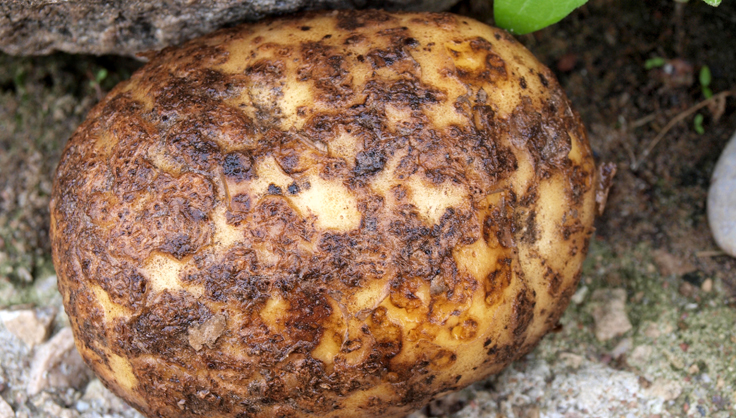Potato Scab

Russeting, raised corky areas, and small pits on the skin of potato tubers are all signs of scab disease, which is caused by bacterialike organisms. A severe case of potato scab may ruin the crop, but mild cases are more common and infection is primarily a cosmetic issue. Other root crops, such as parsnips, beets, carrots and turnips are also vulnerable to scab. The organisms that cause scab are stimulated by soils that have a high organic matter content.
Prevention and Control
- Plant scab-resistant potato varieties, such as Russet Burbank and Superior. Plant only certified, disease-free seed potatoes from a reliable source.
- Adjust soil pH. Acidic soils (below 5.3) inhibit most scab-causing organisms.
- Use a three-year rotation between susceptible crops.
- Avoid adding fresh manure or large quantities of compost to beds where you plan to plant potatoes or root crops.
- Scab is most severe when the soil is hot and dry. Keep the soil moist and cool during the weeks when tubers are forming (unless this might favor other diseases that are prevalent in your garden).
Print this Article:
Get the Dirt
Stay up to date on new articles and advice. Please fill out the information below.
